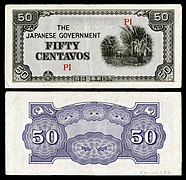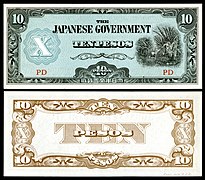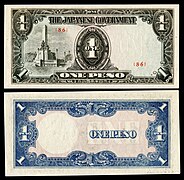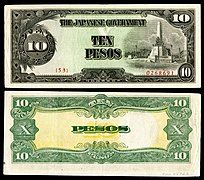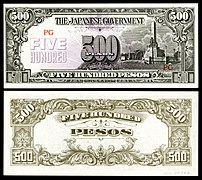Template:POTD/2023-01-28
- 1942 series
-
1 centavo
-
5 centavos
-
10 centavos
-
50 centavos
-
1 peso
-
5 pesos
-
10 pesos
- 1943–1945 series
-
1 peso
-
5 pesos
-
10 pesos
-
100 pesos
-
500 pesos
-
1000 pesos
The Japanese government-issued Philippine peso was a fiat currency issued in the Philippines during World War II, by the occupying Japanese government. One of several examples of Japanese invasion money, the currency was issued in several denominations and was known by some Filipinos by the derogatory term "Mickey Mouse money". The effect of wartime hyperinflation towards the end of the war can be seen in the rapid increase of denomination values that were put into circulation. These thirteen banknotes were issued in ten denominations from one centavo to one thousand pesos by the Japanese government and are now part of the National Numismatic Collection at the Smithsonian Institution.Banknote design credit: Empire of Japan




